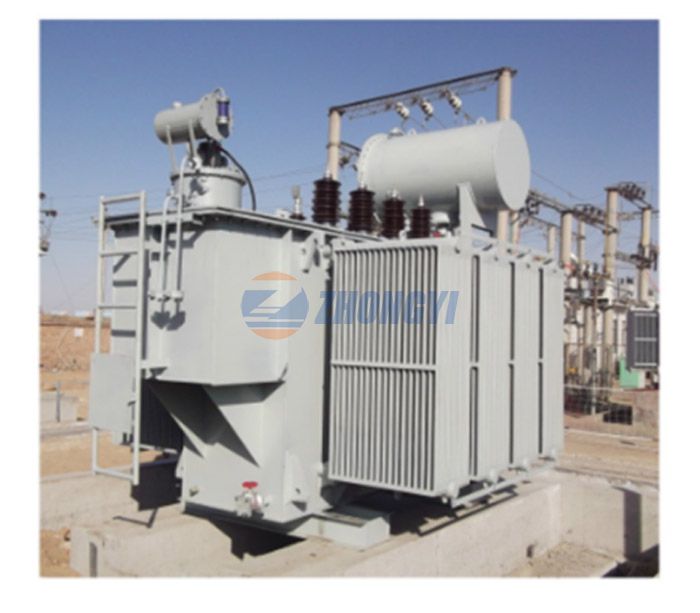The rectifier transformer is a transformer dedicated to the rectifier system. Its principle is the same as that of an ordinary transformer. It is a device that transforms the AC voltage based on the principle of electromagnetic induction.
Transformers generally have two independent windings, the primary and secondary windings. These two windings share a core. The primary winding of the transformer is connected to the AC power supply. The alternating current flows in the windings to generate magnetic potential, so the closed core There is alternating magnetic flux.
The primary and secondary windings cut the magnetic field lines, and the same frequency alternating current can be induced in the secondary. At the beginning of the transformer, the turns ratio of the secondary winding is equal to the voltage ratio.
For example, the primary winding of a transformer has 440 turns and the secondary has 220 turns. The primary input voltage is 220V, and the output voltage of 110V can be obtained at the second of the transformer.
Some transformers can have multiple secondary windings and taps. In this way, multiple output voltages can be obtained. Characteristics of rectifier transformer A transformer that forms a rectifier device with a rectifier to obtain DC power from an AC power source.

Rectifier equipment is the most commonly used DC power supply in modern industrial enterprises and is widely used in DC transmission, electric traction, steel rolling, electroplating, electrolysis, and other fields.
The structural principle of the rectifier transformer is the same as that of the ordinary transformer, but because the load rectifier is different from the general load, it has the following characteristics:
1. Each arm of the rectifier turns on in a cycle, and the on-time only occupies a part of a cycle. Therefore, the waveform of the current flowing through the rectifier arm is not a sine wave, but a rectangular wave close to intermittent; in the primary and secondary windings The current waveforms are also non-sine waves. The figure shows the current waveform of the three-phase bridge Y/Y connection.
When rectifying with a thyristor, the greater the lag angle, the greater the steepness of the current fluctuations, and the more harmonic components in the current, which will increase the eddy current loss.
Since the conduction time of the secondary winding only occupies a part of a cycle, the utilization rate of the rectifier transformer is reduced. Compared with ordinary transformers, under the same conditions, the volume and weight of the rectifier transformer are larger.
2. The primary and secondary powers of an ordinary transformer are equal (ignoring loss), and the capacity of the transformer is the capacity of the primary winding (or secondary winding).
But for the rectifier transformer, the power of the primary and secondary windings may be equal or unequal (when the primary and secondary current waveforms are different, such as half-wave rectification), the capacity of the rectifier transformer is the apparent power of the primary and secondary The average value of is called equivalent capacity, that is, where S1 is the apparent power of the primary side, and S2 is the apparent power of the secondary side.
3. Compared with ordinary transformers, the ability of the rectifier transformer to withstand short-circuit electromotive force must strictly meet the requirements.
The information is provided by the rectifier transformer supplier.
Copyright:@2020-2021
Comments Please sign in or sign up to post.
0
0 of 500 characters used